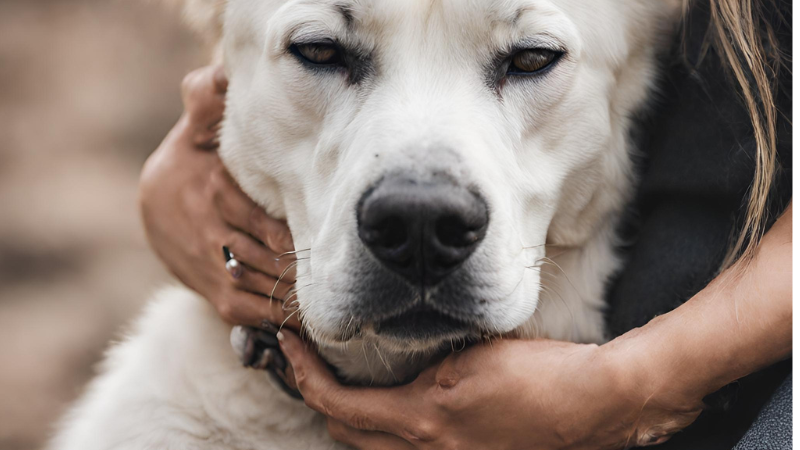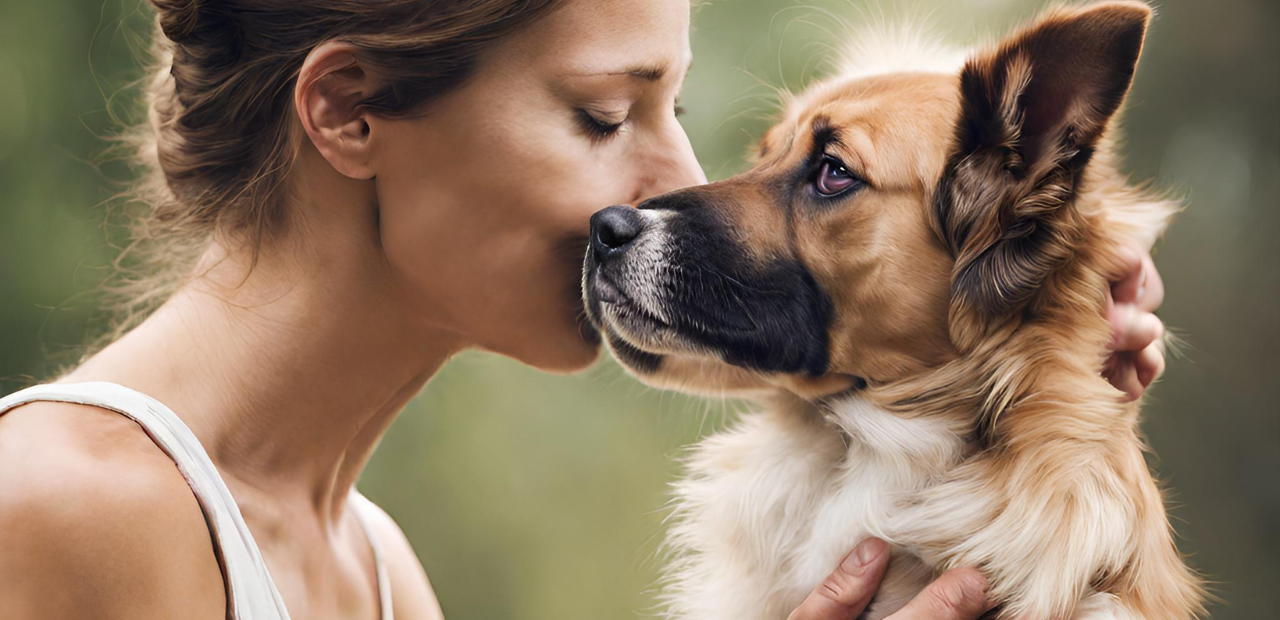Dogs and their unconditional love have been the subject of admiration for centuries. An interesting aspect of this bond is the seemingly undeniable pleasure dogs experience when their sweet spot is scratched. There’s much more to it than a simple reaction, and understanding the science and psychology behind this canine behavior is both fascinating and endearing. Let’s take a closer look at the age-old question: Do Dogs Really Love Getting Their Sweet Spot Scratched?
The Anatomy of The Sweet Spot
One of the most delightful quirks of our furry friends is their so-called “sweet spot.” This term refers to certain areas on a dog’s body where they absolutely love being scratched. These sweet spots vary from dog to dog but often include areas such as the base of the tail, under the chin, and behind the ears. Whether they lose control of their legs or flash what looks like a satisfied grin, it’s clear dogs enjoy these tender touch moments. But to fully appreciate the mystery behind these precious pet moments, it’s essential to have an understanding of the physical and neurological factors at play. Let’s dive in.
Exploring the Physical Features of Dogs Sweet Spots
Dogs have a collection of nerve endings concentrated in certain areas of their body, typically referred to as their ‘sweet spots’. These are often behind the ears, around the belly, or at the base of the tail. Just like humans having a favorite spot to get a massage, dogs too have these favorite places that offer them immense pleasure and relief when rubbed or scratched.
Everyone who owns a dog knows those magic places where a good scratch triggers that leg to start kicking. But why do dogs react that way, and what are the physical features that make these areas their ‘sweet spots’? Let’s find out.
Understanding the Neurological Response to Sweet Spot Stimulation
Ever noticed how your pet dog seems to get all wiggly with pure delight when you scratch that specific spot behind his ears or at the base of its tail? This behavior can be attributed to its body’s neurological responses to stimulation of these regions.
When you scratch your dog’s sweet spot, a bunch of nerve endings get activated. These nerves, concentrated in specific spots, send a message up to your dog’s brain. This message, encoded as a feel-good sensation, is interpreted as pleasure. It’s an experience comparable to a good back scratch for us humans.
The exact intensity and nature of this sensation vary between dogs. This discrepancy is due to factors such as the dog’s individual temperament and the sensitivity of its nerve endings. Yet, the clear takeaway here is that dogs aren’t just acting joyous when you scratch their sweet spot – they truly feel it. Isn’t that endearing?
The Emotional Connection
The emotional connection between dogs and humans goes deeper than mere ownership. It’s a special bond forged with time, trust, and of course, plenty of affectionate scratches at their favorite spots. Understanding the psychology behind this connection reveals why our canine friends find such joy and satisfaction in these beloved scratch sessions. Let’s delve deeper into this.

Uncovering the Psychological Impact of Scritches and Scratches
Let’s delve into why dogs seem to go into bliss-mode when you hit their sweet spot. The act of scratching or “scritching” is more than just an expression of affection – it holds a deep psychological significance.
For dogs, these sweet spot scratches are akin to a soothing massage. They set off a flurry of happy signals in their brains, which bring about feelings of contentment and safety. Think about how you feel when you get a good back rub; that’s pretty much the canine experience during a top-notch scritch session.
But there’s more. Positive physical contact like gentle scratches acts as an effective stress reliever. It reduces the levels of the hormone cortisol, also known widely as the “stress hormone”. You’re essentially helping your canine friend unwind and de-stress when you give them a good scratch.
In essence, it’s not just about the physical pleasure for them. It’s about the emotional fulfillment they receive from a deep bond shared with their human companions.
The Role of Bonding in Dogs Desire for Sweet Spot Scratches
Touch plays a vital role in the relationship between dogs and their human companions. Think about the joy that lights up your dog’s eyes when you settle in for a good scratching session. That look is not just about the physical pleasure of a good scratch. It’s also about the emotional connection built with you, their favorite human.
Bonding with a dog involves mutual trust and understanding. The sweet spot scratches, or ”scritches” as they’re affectionately called, become a way of communicating love and trust. It’s similar to the way we show affection to our fellow humans through hugs and touch. Researchers suggest this can be traced back to the wolves, the ancestors of our domesticated dogs, who used close physical contact and grooming as a way to reinforce social bonds within the pack.
We could say that every time you scratch your dog’s sweet spot, you’re not only giving them physical pleasure but also nurturing a deeper emotional bond. So, next time you find your hand wandering towards that sweet spot, remember it’s a scratch brimming with love!
Why does my dog love being pet? (https://www.purina.co.uk/dogs/behaviour-and-training/understanding-dog-behaviours/why-do-dogs-like-being-petted) We explore this in more detail in our article: “Why Dogs Love Being Pet?”
The Evolutionary Perspective
Over the course of time, dogs have evolved in fascinating ways, especially when it comes to their interactions with humans. One intriguing area to explore is whether their love for sweet spot scratches is a result of survival instincts, true affection, or a mix of both. This part of our journey delves into the heart of evolution itself, searching for the roots of this endearing canine behavior.
Tracing the Origins of Canine Affection for Tender Touches
Isn’t it amazing how our four-legged friends seem to revel in a good sweet spot scratch? But where does this canine affection for tender touches really stem from?
Well, for starters, this behavior can be traced back to their wolf ancestors. Wolves are social creatures, and grooming practices like licking and scratching are not just for hygiene. They’re a way to show affection and maintain social bonds. It’s likely that dogs, over generations, have inherited this love for gentle touches as part of their social instincts.
Yet, it’s not just about the social aspect. Scratching or petting a dog’s sweet spot can also stimulate certain nerve endings. These nerves send messages to the brain that generate feelings of pleasure and satisfaction. It’s kind of similar to how humans might feel when getting a relaxing massage.
So when you’re scratching your dog’s sweet spot and they’re wagging their tail or rolling over in bliss, you’re not only tickling them just right. You’re also engaging with deep-seated behaviors that span back to their evolutionary past. How fascinating is that?
Survival Instincts or Genuine Affection: Decoding Dogs Sweet Spot Behavior
Life is full of mysteries, but one that sparks much fascination and intrigue is the unbelievable pleasure dogs exhibit when we hit their sweet spot. A common question arises: is this a survival instinct at work or a sign of genuine affection?
Many animal behaviorists argue that this reaction could be a survival instinct passed down from dogs’ wild ancestors. In the wild, packs of dogs groom each other to keep parasites at bay. This grooming behavior is often beneficial to their survival. When we scratch their sweet spot, we might be stimulating a feeling similar to that grooming behavior.
On the other hand, researchers have put forth that this might be a show of pure joy and affection. Our dogs know we won’t harm them. When we scratch that sweet spot, we’re offering them a form of affection and stimulation they enjoy.
As with most things related to animal behavior, the exact reasoning behind dogs’ love for sweet spot scratches is likely a complex mix of both survival instincts and genuine pleasure. To fully understand these behaviors, further investigations into the emotional and evolutionary mechanisms at play would be required. Regardless of the reason, one thing’s for sure – our furry friends love a good scratch!
We recommend reading the article: Why Does my Dog go Crazy When I Scratch His Lower Back?
The Signs of Sweet Spot Satisfaction
When it comes to our furry companions, reading their body language is crucial in understanding the unspoken messages our dogs are trying to communicate. In this section, we will systematically decode the tell-tale signs of sweet spot satisfaction and decipher how you can differentiate between genuine pleasure versus mere compliance during those blissful scratch sessions.
Interpreting Dogs Body Language During Sweet Spot Stimulation
Understanding your dog’s body language can significantly enhance your bond with them. When you scratch your dog’s sweet spot, pay close attention to their reactions. This is a vital part of effective communication with your furry buddy.
Now, let’s delve into the specifics. What body language should you be looking out for?
Tail Wagging: If your dog’s tail is wagging while you scratch, it’s a solid sign of happiness. Keep an eye out for relaxed and rhythmic wagging.

Ear Positioning: Dogs’ ears are incredibly expressive. If their ears are forward and slightly pulled back, it’s likely they’re enjoying the sweet spot scratch.
Body Posture: A relaxed posture with eyes nearly closed in bliss is a pretty clear indicator that your dog loves the scratching. Watch out for any stiffening or signs of discomfort.
Healthy communication isn’t just about understanding when your dog enjoys something. It’s equally important to recognize any signs of distress. Always remember to respect your pet’s boundaries during any physical interaction.
Recognizing Indicators of Genuine Pleasure versus Mere Compliance
Part of our journey is to understand that our dogs might not always be experiencing the bliss we imagine when we scratch their sweet spots. It’s easy to mistake a dog’s automatic movements and reactions for signs of enjoyment. However, being able to spot the difference between genuine pleasure and mere compliance can greatly enhance our relationship with our four-legged friends.
Dogs often react to sweet spot scratches with leg-kicking or groaning. This is known as the ”scratch reflex” – an automatic behavior triggered by stimulation of certain nerves. The important thing to remember is that an automatic reflex does not necessarily mean that they’re enjoying the interaction.
On the other hand, undeniable signs of pleasure include a relaxed body, a wagging tail, and a peaceful expression. If your dog rolls over to give you better access to their belly, or nuzzles into your hand for more, these are clear signs of delight. Remember, it’s about observing and understanding your dog’s unique signals of consent and contentment.
Myth Busting: Common Misconceptions
There’s a lot of misinformation floating around about your furry friends and their affection for sweet spot scratches. This rumor mill has created a cloud of misconceptions about how and why dogs enjoy this affectionate activity. In this section, we’ll peel back the layers of these myths, using scientific insight and pooch psychology to get to the true heart of the matter. Are you ready to bust some doggy myths with us? Let’s go!
Addressing Misunderstandings About Dogs Sweet Spot Preferences
Perhaps you’ve heard the saying that “doggos just love scratches behind the ears, right?” Well, it’s time to clear up some popular misconceptions about your canine’s sweet spot.
Firstly, it’s essential to understand that all dogs are individuals. Just as some humans enjoy hugs and others don’t, different dogs have varied preferences when it comes to their sweet spots. While one dog may love a good belly rub, another might prefer scratches on the chest or behind the ears.
The second misunderstanding is that, if a dog doesn’t show immediate signs of enjoyment, they don’t like to be touched. Don’t be so quick to assume! Some dogs are more discreet in showing their pleasure when their sweet spot is scratched. Look for subtle signs of relaxation, such as a soft gaze or a wagging tail, to understand your furry friend’s preferences better.
The third myth is that the tail is a universal “sweet spot”. While some dogs do enjoy having their tails touched, it can be a sensitive area for others. Always observe your dog’s reaction to understand what they prefer.
In conclusion, the key is to learn and respect your dog’s individual likes and dislikes. This understanding will enable you to enhance your bond and make your canine companion feel truly loved and understood.
Dispelling Myths About Overstimulation and Aggression
A common myth revolves around the belief that scratching a dog’s sweet spot could lead to overstimulation and subsequent aggression. This theory has gained ground over time, causing apprehension among dog owners.
However, the truth is vastly different. You see, dogs communicate their comfort levels in various ways. If they feel overstimulated, they usually show specific signs like moving away or stiffening their bodies. These subtle hints indicate that they’ve had enough, and respecting these boundaries is key.
As for the fear of aggression, it’s important to understand that aggression is typically a response to fear or anxiety. If your dog is comfortable with you and trusts you, they are unlikely to react negatively to their sweet spot being scratched.
Remember, these sweet spot sessions should be a calming and bonding exercise. Provided you’re attentive to your dog’s body language and feelings, you don’t need to fear overstimulation or aggression. Respect and understanding contribute to a fantastic bonding experience!
The Human-Dog Connection
You may be scratching your dog’s sweet spot as a show of affection, but have you ever wondered about the impact it has on your own well-being? The connection between humans and dogs goes deeper than just ownership. It’s a special bond that is enhanced daily through interactions like scratching a dog’s favorite spot. In this section, we will delve deeper into the human-dog connection, understanding how these little rituals benefit not only our four-legged friends but also us, the happy pet owners.
The Mutual Benefits of Sweet Spot Rituals for Dogs and Their Humans
When we consider the bond shared between humans and dogs, it’s filled with heartwarming gestures. The affectionate ritual of sweet spot scratches also plays a key role in this relationship. But beyond the tail wags and happy faces, you might be surprised to learn that there are mutual benefits for both parties.
Studies indicate positive physiological and psychological effects for us humans experiencing close contact with our pets. This includes lower heart rates, decreased anxiety, and a sense of companionship. And it’s not just a one-way street – the benefits for our furry friends are noteworthy too.
A good scratch leads to not just euphoria for most dogs, but also a strengthening of social bonds between them and their human companions. It’s a form of communication conveying trust and intimacy, and can even help to settle and calm them down.
Moreover, the sensation of a good scratch can result in a notable release of endorphins in dogs. These are hormones linked to feelings of comfort and pleasure, and are the very same ones triggered in humans during moments of joy or exercise. So it’s safe to say this ritual indeed turns out to be a win-win scenario.
Building Stronger Bonds Through Respectful Affection
There is a magic in the act of affectionately scratching your dog’s sweet spot. Did you know that it can also foster a stronger bond between you and your furry friend? Let’s dig a little deeper.
When you hit that sweet spot in just the right way, you’re actually communicating with your dog on a deep emotional level. This seemingly small exchange brings joy to your dog and can also release oxytocin in both of you. This special hormone, also called the “bonding hormone,” fosters a deep sense of trust and closeness.
Furthermore, according to a study by Nagasawa and colleagues, the owner-dog interaction resulting from gaze between the two increased levels of oxytocin in both parties. This mutual exchange of loving gazes, often occurring during a sweet spot scratching session, may well contribute to building stronger emotional bonds.
So not only does your dog get physical pleasure from a good scratch, they’re also getting an invaluable dose of emotional connection. And the best part? You get to share in it too, building a healthier bond with your dog through respectful, affectionate interaction.
Conclusion
The irresistible joy that dogs experience when their sweet spot is scratched goes far beyond a simple physical reaction – it speaks to a profound emotional and evolutionary connection between humans and their beloved canine companions. With a better understanding of this behavior and its underlying motives, we can continue to celebrate and nurture the special bond we share with our furry friends.








